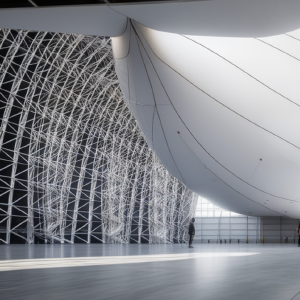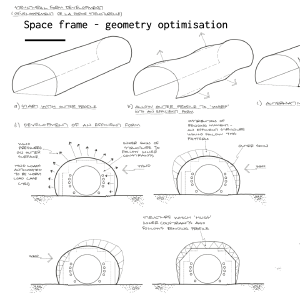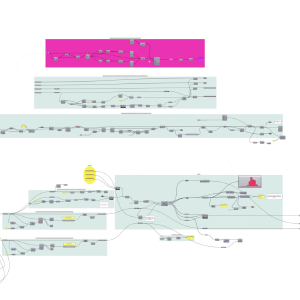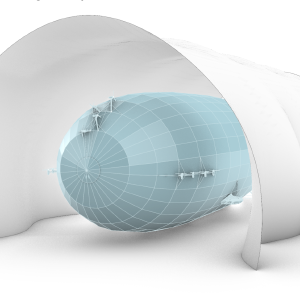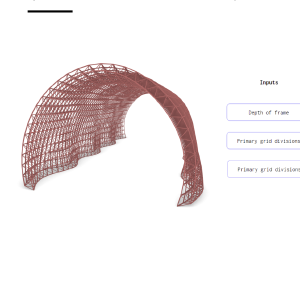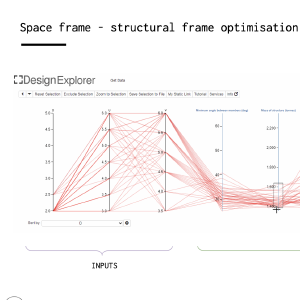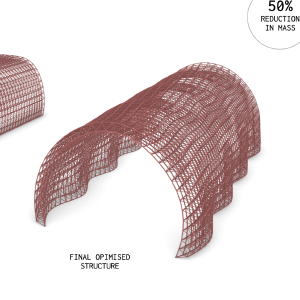Long Span Space Frame Optimisation
As part of an an on-going project we have developed an approach to the optimisation of long span space frame structures. Buildings of this nature are inherently a problem of minimum structural weight and embodied energy whilst respecting internal boundaries (such as a minimum working distance around internal objects) and at the same time presenting a less efficient wind profile or limited area of cladding. Our methodology was scripted within the Rhino 3d/Grasshopper parametric environment to take advantage of open source components as well as self penned code.
The optimisation approach was threefold. Firstly, a global boundary surface was generated based on the clients requirements for minimum working area. That surface is then subdivided into vertical control curves and then the curves into a flexible number of control points. The control points are allowed to translate in the x,y and z axis on a two dimensional plane and the control curves follow. A new global surface is defined by the control curves, the structural performance of which ( least resultant deflection under wind load) is automatically tested by a ‘genetic algorithm’ until the fittest solution, an optimal global surface, has been automatically generated.
That surface is then populated with a three dimensional space frame structure with varying parameters of depth, pitch of member and orientation of member. The open source plug in for Grasshopper, Colibri is used to generate thousands of variations of the geometry which are each tested structurally. The plug-in allows data to be easily sorted such that the most acceptable compromise solution between limiting the number costly cast nodes, impractically long members and overall structure weight/CO2 can be found.
The final optimisation step is to use the set geometry from steps one and two within further scripting, allowing the automatic specification of the lightest structural element throughout the frame. Further studies will look at other techniques such as K-means clustering to add some practical repeatability to the frame and ‘bunch’ the same size and weight members into prefabricated segments and still minimise material global volume but at present advice from space frame specialist contractors is that digital fabrication negates the need for this.
